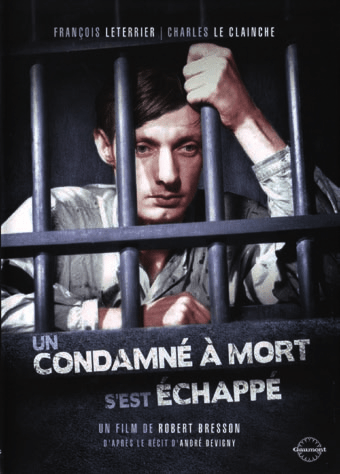ARTE broadcasts A death row inmate escaped Monday, July 25 at 8:50 p.m.
This film, made in 1956, was a huge hit with both audiences and critics on its release, establishing Robert Bresson as one of the greatest French authors. five years later Diary of a country priest, A death row inmate escaped completes the imposition of Bresson’s style, and earns him international recognition – the film receives the prize for directing at the Cannes Film Festival. With remarkable economy of means and exemplary rigor, Bresson achieves extraordinary dramatic intensity and transforms a meticulous tale of escape, inspired by a true story, into an exaltation of individual human will.
Robert Bresson, despite his concern for authenticity and truth, moves away from both neo-realism and documentary. He decides to shoot in the very location of the action (the prison of Fort de Montluc), uses props having been used for the escape, enlists the services of the real protagonist, André Devigny, as technical adviser, and brings together for the first time a cast exclusively made up of non-professionals. Bresson informs the spectator, by the presence of a handwritten sentence preceding the credits, that this story is true and that he gives it as it is, without ornaments. However, as Jacques Lourcelles points out in his Movie Dictionary, it is permissible not to take such an assertion literally. Bresson’s staging, through its radical anti-naturalism, achieves an unprecedented form of asceticism, which leads to a lyricism as intense as it is paradoxical. Bresson, through an elliptical montage, the fragmentation of bodies and space, an atonal direction of actors, a use of Kyrie of the High Mass of Mozart invents his own ornaments, creates a new art of staging which he henceforth calls “cinematography”, as opposed to “cinema” which presupposes a contamination, even a domination of the theatre, the intimate enemy of the filmmaker. Thereby, A death row inmate escaped can claim the designation of resistance film on two counts. Its hero transforms a proud idea into action – a prison is made to escape – while Robert Bresson places his film under the sign of refusal: refusal of conventional cinema, refusal to apply rules other than his own. In both cases, insubordination leads to freedom. “The wind blows where it will,” Jesus said to Nicodemus (John, 3.8) is the subtitle of the movie.
We know the importance of the hands in Bresson’s work, parts of the body charged with a value and a meaning denied to others. In its strictest sense, cinematographic fetishism offers the viewer substitute objects – and images. This is the exemplary case of Robert Bresson’s cinema which fragments the bodies for the sake of passive expressiveness, refusing the theatricality of the face or the voice, giving only the hands the task of designating the affects of its models. Three years before PickpocketBresson films in A death row inmate escaped hands that contain the energy of refusal and resistance. It is for Fontaine not to accept a fate that seems inevitable – to die under the bullets of his German jailers, like other prisoners before him – the film is punctuated by the sinister sounds, off screen, of firing squads . His hands will literally embody this idea of the disgust of renunciation, and the pleasure of disobedience, through a meticulous succession of tasks – transforming a spoon into a chisel, dismantling the planks of his cell door, making a rope with his mattress and a wire… all of which have one goal: freedom.
A death row inmate escaped is undoubtedly Bresson’s most optimistic film. This universal celebration of courage, guided by divine faith, does not forget to include in this individual trajectory the theme of human encounter and solidarity. Without Jost, the adolescent deserter imposed on him in his cell, Fontaine would probably not have carried out his solitary escape plan.
The idea of transcendence is far from foreign to Bresson’s cinema. The materiality of things and beings, as it is meticulously and lengthily filmed by Bresson, is the passage that allows access to spirituality. Bresson takes a detour and takes a “strange path” by recording reality to reach grace.
A death row inmate escaped is available on DVD and Blu-ray, published by Gaumont.
A Death Row Convict Escaped by Robert Bresson – Olivier Père

